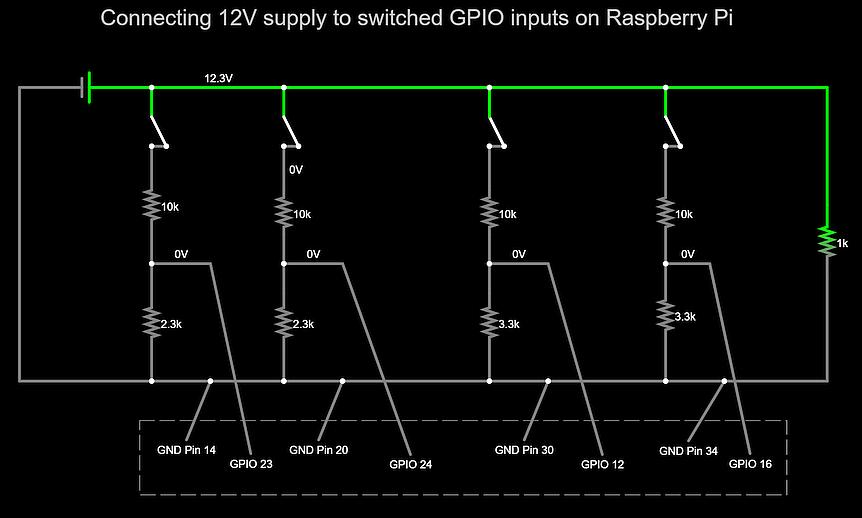Very new to GPIO and wiring circuits so I'm hoping someone can clarify whether what I'm doing is going to be safe for the Pi.
In my original question I was looking for the way to get my 12V supply down to a nice voltage for GPIO. After learning about voltage dividers I got a working breadboard layout connected to 4 button/LED combinations using resistors and each mini-circuit got down to 2.34V - safe for GPIO input.
I'm just using GPIO button to check for a closed button - not powering anything thru GPIO
In theory only one button will only ever get pressed at once - but my question/worry is what happens if more than one button gets pressed at same time,- each one supplying 2.34V to separate GPIO inputs? Will the Pi be safe?
My circuit on falstad looks like this - with one switch closed (showing 2.3V)
The 4 center outputs will go to separate GPIO pins on the Raspberry Pi
EDIT: UPDATED CIRCUIT TO SHOW PI CONNECTIONS

